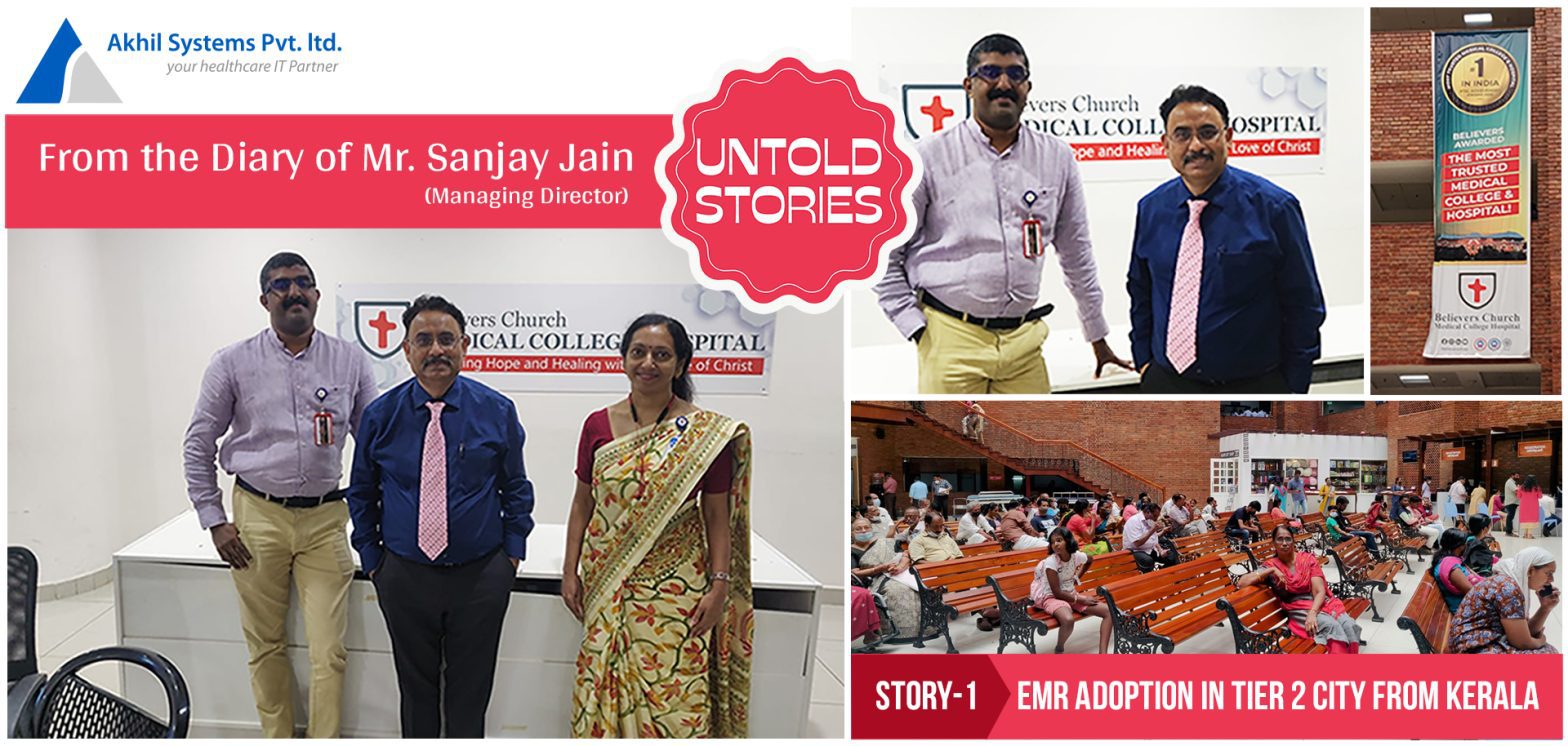Over the course of my three decades of experience in the healthcare industry, I have encountered numerous hospitals that have had a transformative impact, they have demonstrated that automation, which may seem challenging in ordinary circumstances, is indeed feasible and have set an exemplary standard for others to follow. I am delighted to share one such remarkable story or use case .
During my visit to Kerala, I had the privilege of visiting the Believers Church Medical College in Thiruvalla, which is approximately 100 kilometres from Kochi in the southern part of Kerala. It is an impressive 750-bedded tertiary care medical college cum hospital, staffed with a dedicated team of medical professionals who are committed to providing comprehensive healthcare services, ranging from primary care to super specialty care, including interventional cardiology. The hospital is equipped with state-of-the-art, ultra-modern operation theatres and intensive care units.
We had the pleasure of collaborating with the Believers Church Medical College for nearly eight years, and in 2015-16, we successfully implemented our Miracle HIS and EMR system. It is truly commendable that the hospital has achieved almost 100% EMR adoption by doctors in the outpatient department. This demonstrates their commitment to embracing technology and enhancing patient care. It is inspiring to witness how the hospital has effectively integrated EMR into both outpatient and inpatient care, leading to improved efficiency and better patient outcomes.
Each physician generates computerized prescriptions from Miracle EMR. As I delved deeper to comprehend the process, I discovered that each doctor had meticulously designed their own templates to cater to their specific needs, encompassing clinical history, examinations, investigations, and medications. While preparing e-prescriptions, our single-screen EMR system empowers them with the ability to access previous patient visits, enabling them to seamlessly copy relevant data into the current prescription. Additionally, they can view diagnostic results with graphical charts, providing clear insights into trends of clinical parameters. Furthermore, the integration of PACS with Miracle HIS allows them to view images directly from the system.
Patients express immense satisfaction when they witness their complete medical records readily available to the doctor, eliminating the need to carry physical prescriptions and reports from previous visits.
In today’s competitive healthcare landscape, it is imperative for healthcare institutions to prioritize patient experience. The industry is undergoing a paradigm shift, moving from a traditional approach to a patient-centric, clinical analysis-based model. In this context, the adoption of Electronic Medical Records (EMRs) plays a pivotal role. Contrary to popular belief, EMR implementation is not an arduous task, but rather a journey that requires collaboration between healthcare professionals, hospital management and Software partner. While initial challenges may arise, with time, physicians will develop proficiency and confidence in generating computerized prescriptions, akin to their ease in writing manual ones.
For better EMR adoption, I would like to respectfully suggest the following to hospitals:
- Management Commitment: Demonstrate a complete and unwavering commitment to the implementation of EMR. A half-hearted approach will not yield positive results. When doctors see that the hospital management is fully behind this initiative, they will be more likely to show interest and support.
- Clinical Team Formation: Establish a clinical implementation team that includes clinical specialists, hospital IT team members, and EMR partners. This collaborative team will provide comprehensive support to doctors throughout the implementation process.
- Rigorous Training: Invest in comprehensive training and support for several weeks. The technology partner should provide full assistance to hospital staff during this period.
- Flexibility: The most common thing doctors says, System is not user friendly, it has too many clicks, it is useless etc. Be open to criticism, feedback and suggestions, try to Understand their concerns, try to give some work around , shortcuts and ready to accommodate their specific needs where ever is possible.
- Keep it Simple : Keep data capturing forms simple and straightforward. Avoid creating overly complex forms that may discourage doctors from using the EMR.
- Favourites: Create a variety of favourites for medications, investigations, chief complaints, etc. This will streamline the data entry process, as each specialty has its own commonly used tests and medications.
- Care Plan: Create a library of care plans for common diagnoses. This way, doctors can quickly select and save a plan, giving them more time to spend with patients instead of writing everything up.
- Charts: Add comparison charts for different clinical parameters. This will help doctors easily track and compare patient progress.
- Integrations: Connect EMR with other modules so that doctors can access real-time results. Also, integrate with a doctor app, SMS, and WhatsApp so that doctors can get important updates and make timely decisions, even when they’re not at their desks.





